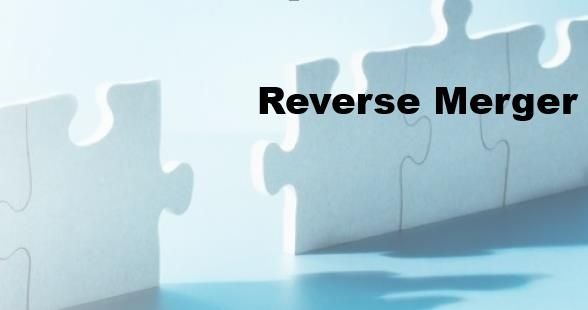Reverse Mergers and Aged Shelf Corporations for US Businesses
At Southwest Business Consulting, we guide entrepreneurs and businesses through reverse mergers using aged developmental shelf corporations an efficient alternative to the traditional IPO. For companies not ready to meet the $50 million underwriting threshold, reverse mergers offer a cost effective and timely way to go public. Our expertise lies in evaluating the best fit shelf corporations, navigating financial disclosures, and helping you raise capital through private placements. Whether your business is just gaining traction or positioned for growth, we help develop the roadmap toward becoming a publicly traded company.

Reverse Mergers and Aged Developmental Shelf Corporations
Initial Public Offerings (IPOs) are the most known way by the public of taking a company public. However, unless your company can qualify for a minimum $50 million underwriting, it’s not going to happen. There are, of course, alternatives to going public. As discussed, the entrepreneur has to have a plan. An alternative plan to immediately going public through an underwriter is to merge into an Aged Developmental Shelf Corporation and raise working capital through one or more private placements.
While this process is taking place, you have the opportunity to identify what has to be done to qualify for a larger underwriting and get working on those things. You will also be able to do private placements to raise equity capital, grow your business, and hire a deeper management team. You will need to beef up your financial reporting ability and establish internal controls. In almost every transaction we have done, the entrepreneur has had no idea of how much financial data is required and is astonished at the time required and the cost of getting it together.
The size and quality of the Aged Developmental Shelf Corporation your company merges with will depend upon where your company is now. Do you have a $5 million company you are boot-scraping, or a $20 million company that can afford a $500,000 fully registered trading public company? Will you merge into a required filer or a voluntary filer? This takes some evaluating.

Advantages of a Reverse Merger Versus an IPO
Reverse mergers into an Aged Developmental Shelf Corporation provide major benefits as compared to an IPO:
- It is a much less expensive method of going public. In a reverse merger, much of the costs can be predetermined. The biggest variable in a reverse merger is the existing status of the merger Aged Developmental Shelf Corporation used; the transaction can generally be accomplished for between $150,000 and $250,000, along with an equity position to the controllers of the merger corporation. A reverse merger may not require a PCAOB audit, even though it will require current audits.
- The process is much speedier. An IPO, assuming the company is ready and has current acceptable PCAOB audits, can take between six and twelve months. A reverse merger can be done in a matter of days to a few weeks.
- Management has more control over the reverse merger process to make sure it actually happens. In an IPO, the underwriter can cancel the offering the day before it happens if market conditions are not right.
- The reverse merger process does not require as much time from management as does an IPO. In an underwriting, the management of the company will spend a lot of time on due diligence, work on offering documents, and eventually participate in road shows with the underwriter.
- The price of the Aged Developmental Shelf Corporation and percentages of ownership are worked out between the developer and the company management before the reverse merger, and that’s the deal. In an underwriting, the price is not set until the day of the launch.
- In an underwriting, it is possible to raise too much money and give up too much equity too early because of the overall fixed costs of doing the transaction. In a reverse merger, the reverse merger is one transaction, and a private placement transaction is a different follow on transaction. Each round of financing would be designed to provide enough working capital to last for at least 18 months. Each time the company does a transaction, it can build upon the accomplishments of management since the last round of financing and receive more money and give up less equity.
How to Value a “Public” Aged Developmental Shelf Corporation
To identify and value an appropriate corporation for a specific merger candidate, it is necessary to understand six important characteristics of the corporation:
- How was the corporation created? Some Aged Developmental Shelf Corporations are created from scratch by a shelf corporation developer. Many of these shelf corporations have never done any business and have not created any liabilities. The older a private corporation is, the better. Southwest Business Consultants, Inc. has a number of privately created shelf corporations which we have had “on the shelf” for as long as 25 years. Every corporate structure just has to be looked at and the positives and negatives evaluated to see if it will fit the desired need.
- Does the corporation have any assets or liabilities? Some shelf corporations could have a substantial amount of cash in the bank. All things being equal, the shelf corporation would be substantially more valuable than the cash because of the savings of time and money to duplicate the cash. (Or, the cash could be dividended to the selling shareholders before the close of the transaction.) Some shelf corporations could have assets on the books that the buyer deems of little value, such as old inventory or old accounts receivable. Those assets could stay on the books at one value but be highly discounted by the seller. An example of liabilities a company could have would be old accounts payable or a long
- running lawsuit that the seller claims will never be settled. In those cases, the seller can indemnify the buyer on those specific potential claims.
- Is the corporation trading or nontrading? Shelf corporations formed from scratch do not have registered trading stock. The merger has to take place first, and then the stock can be registered or traded using some exemption. Corporations that have existing trading shares that have been registered continue to trade in the market.
- Is the corporation reporting, nonreporting, or a voluntary filer? A reporting company is required to file quarterly, annual, and other regular reports with the SEC and is subject to other rules regarding insider trading and soliciting proxies. Companies that trade on the Pink Sheets may trade without reporting. A third category of companies is known as “voluntarily reporting.” These public companies are not subject to the reporting requirements, but they have chosen to file quarterly and annual reports with the SEC just as if they were required filers. It is possible that a voluntary filer could become a mandatory reporting company by completing a Form 8-A a relatively simple filing compared to the alternative, Form 10-SB.
- What is the size of its shareholder base? In addition to public status, the other major asset a corporation has to offer is a shareholder base. The only way meaningful trading in a stock can build is through the addition of a good number of shareholders. A public company with twenty or thirty shareholders is simply less valuable than one with 200 to 300 shareholders, or more. Therefore, one of the factors influencing how corporations are valued is the number of shareholders.
Ready to go public faster? Contact us to explore reverse mergers and shelf corporation options.

© 2025 Southwest Business Consulting
